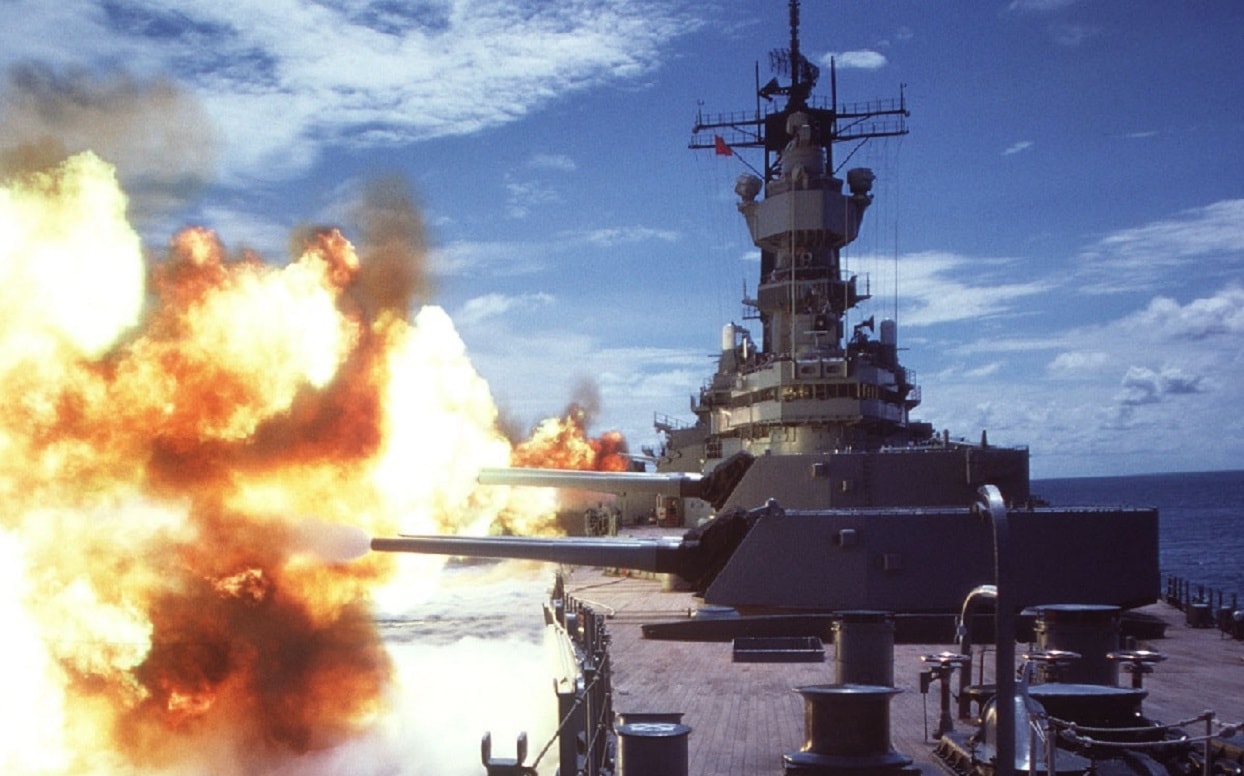World War II was the largest and most deadly conflict in human history. It involved the majority of the world’s nations, including all of the great powers, and the total war directly involved more than 100 million personnel from more than 30 nations.
Truly a global war, it was fought on land, in the air, and on the sea. In fact, it is noted for having some of the largest naval battles in human history. This included the Battle of the Atlantic, which was the longest military campaign of the war, lasting five years and more than eight months from 1939 until the defeat of Nazi Germany. However, even as it has been described as the “longest, largest, and most complex” naval engagement in history, some experts would argue that it was actually a series of battles that took place in diverse and distinct locations.
In terms of more “traditional” engagements, these top the list of the largest naval battles of World War II:
5 Largest Naval Battles of the World War II – Battle of Cape Matapan (March 27–29, 1941)
Arguably one of the largest naval exchanges ever in the Mediterranean, the Battle of Cape Matapan is also a largely overlooked engagement that involved the Kingdom of Italy’s Regia Marina against the UK’s Royal Navy, which was supported by the Royal Australian Navy. At the start of the Second World War, the British maintained control of the Straits of Gibraltar and the Suez Canal, while it had a powerful task force stationed at Malta.
After the Vichy French fleet was essentially destroyed and removed from the board by the Royal Navy at Mers-el-Kébir, and the German Kriegsmarine unable to aid by sending any surface ships, Italy was left to go it alone. Italian Dictator Benito Mussolini may have had dreams of building a new Roman Empire that would turn the Mediterranean into a Roman lake again, but it was a pipe dream. Despite building modern battleships, the deck was stacked against Mussolini.
An Allied flotilla that included an aircraft carrier, three battleships, seven light cruisers, and 17 destroyers engaged the Italian fleet that consisted of the newly built flagship, the modern battleship Vittorio Veneto, which was joined by six heavy cruisers, two light cruisers, and 13 destroyers. The Germans had incorrectly warned their Italian allies that the British had only a single operational battleship and no carriers. Even worse for the Regia Marina, the British had intercepted Italian communications and launched a surprise attack. Five Italian ships were sunk, while two others were heavily damaged. Some 2,300 Italians were killed and another 1,015 captured. Just three Allied sailors lost their lives, while four of the cruisers suffered damage. It was a stunning victory for the Royal Navy, and an utter defeat for Italy.
5 Largest Naval Battles of the World War II – Battle of the Coral Sea (May 4-8, 1942)
This naval battle has been called a prelude to a far more significant engagement a month later. Yet, the Battle of Coral Sea is still notable in that it was the first battle in naval history in which the warships of the two sides never actually saw one another. It was also the first in which aircraft carriers engaged each other, and where most of the fighting was conducted in the air.
It involved some 27 ships from the United States Navy, including two fleet carriers; and 53 Imperial Japanese Navy (IJN) vessels that included two fleet carriers and a light cruiser. It is also worth noting that no battleships took part in the engagement. Yet, each side took a pounding. Some 650 Americans were killed while more than 900 Japanese servicemen lost their lives.
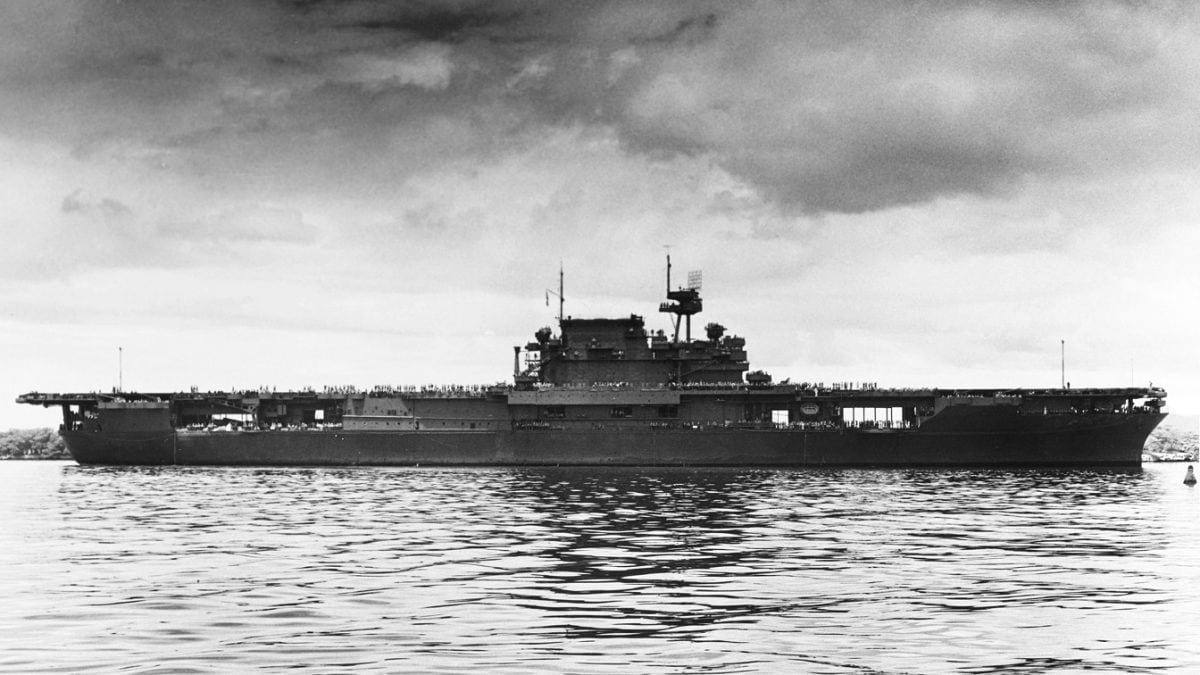
The U.S. Navy aircraft carrier USS Enterprise (CV-6) entering Pearl Harbor on 26 May 1942, following the Battle of Coral Sea and shortly before the Battle of Midway.
The U.S. Navy lost three ships including the aircraft carrier USS Lexington, while USS Yorktown was heavily damaged. The Japanese lost just its single light carrier, Shōkaku – yet the battle cost 92 aircraft, so many that Japan’s third carrier Zuikaku, lost her entire air wing. As a result of the battle, Japan was forced to call off its invasion of Port Moresby. For the Japanese, it was a Pyrrhic victory in the truest sense.
5 Largest Naval Battles of the World War II – Battle of Midway (June 4-7, 1942)
This battle has been the subject of two feature films, dozens of books, and hundreds of articles. The Battle of Midway has been called a turning point in the Pacific War, and for good reason. The United States Navy started the battle with three fleet carriers, seven heavy cruisers, a light cruiser, and 15 destroyers; while the IJN began with four fleet carriers, two battleships, two heavy cruisers, one light cruiser, and 12 destroyers.
Deception played a crucial role for the U.S. Navy, whose cryptanalysts had begun breaking Japanese communication codes early in 1942, and knew for weeks ahead of time that Japan was planning an attack in the Pacific at a location they called “AF.” The U.S. officials suspected it was Midway and decided to send out a false message from the base claiming it was short of fresh water. Japan’s radio operators sent out a similar message about “AF” soon afterward, which confirmed the location of the planned attack.
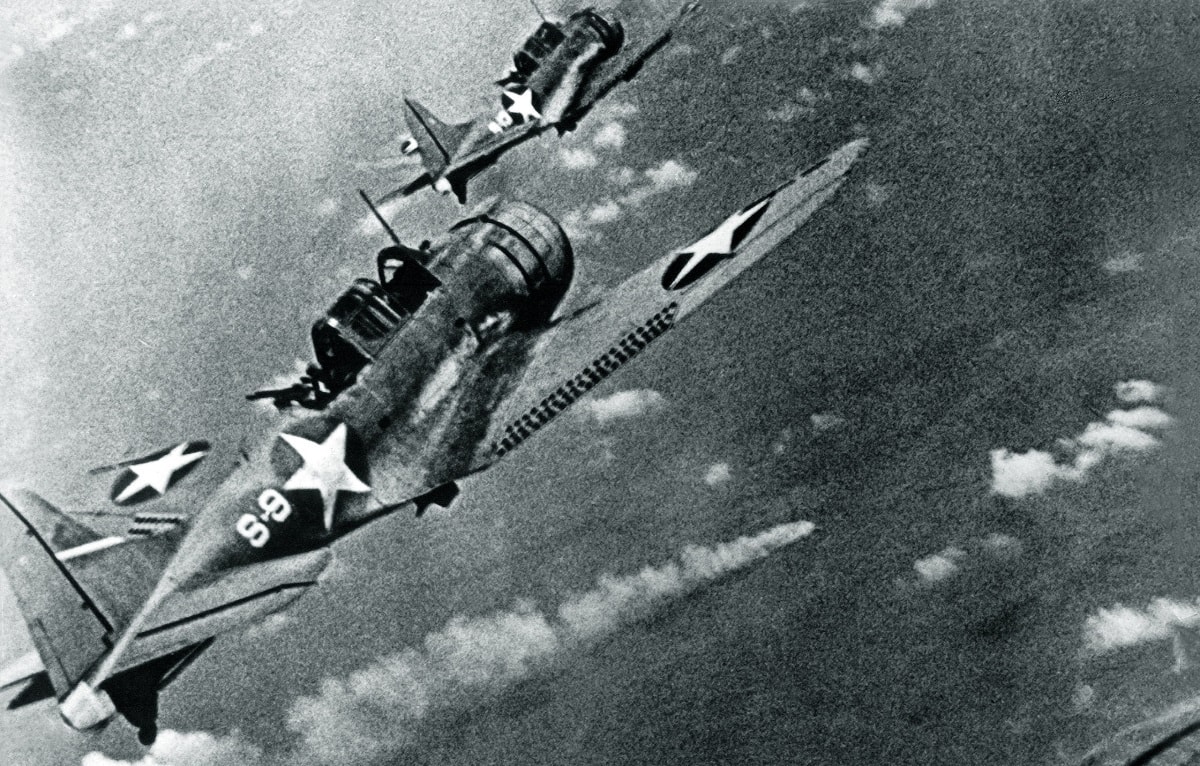
Image: Creative Commons.
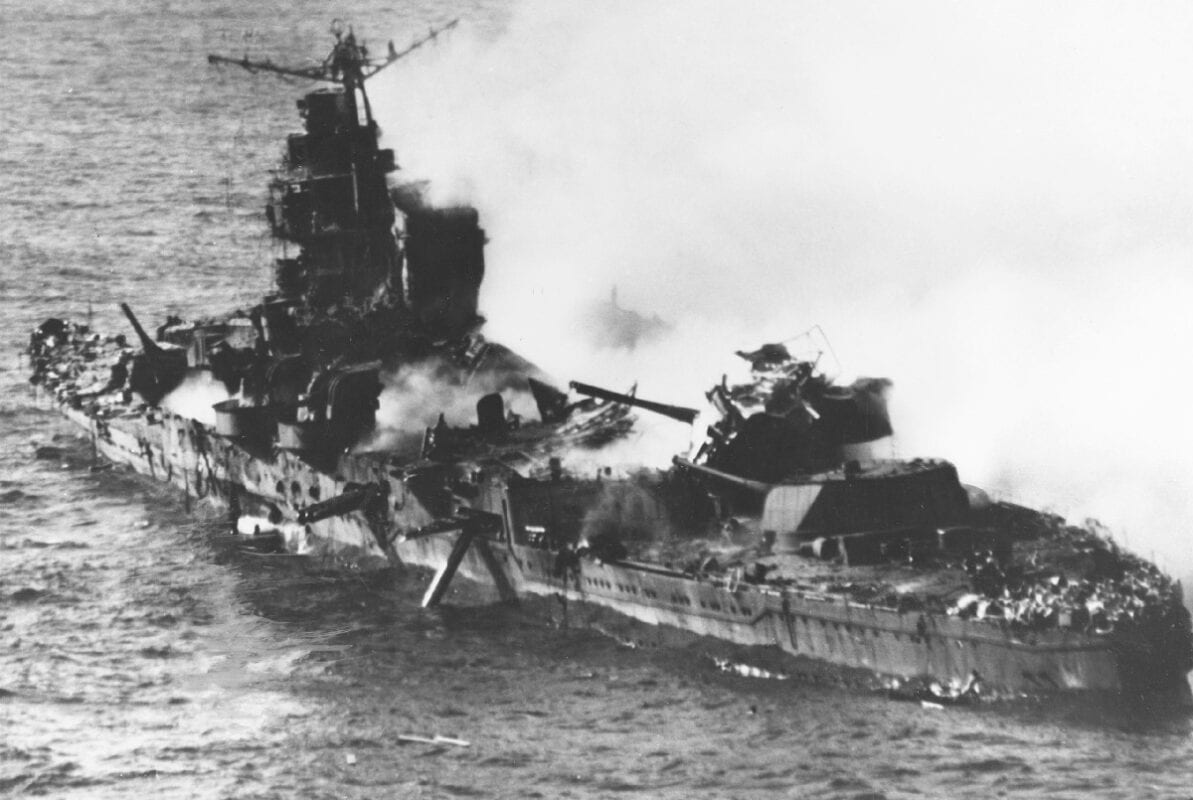
In addition, the IJN had wrongly assumed that the U.S. aircraft carrier USS Yorktown, which had been damaged during the Battle of the Coral Sea, would be unavailable at Midway. In fact, the damaged carrier was repaired in just two days at the Pearl Harbor Navy Yard and was sent into battle.
When the smoke cleared after three days of fighting, the United States had lost Yorktown and a destroyer; but the IJN saw four of its fleet carriers and a heavy cruiser sunk. The U.S. forces lost around half – some 150 – of its aircraft, while the Japanese lost all 248 of its aircraft and more importantly its most experienced pilots. It wasn’t a knockout blow, but it was still a devastating loss for the IJN.
5 Largest Naval Battles of the World War II – Battle of the Philippine Sea (June 19–20, 1944)
Even after the setback at the Battle of Midway two years earlier, the IJN remained a true fighting force – and its carrier fleet was seen as a significant threat. That was not true after the Battle of the Philippine Sea, as it essentially eliminated the IJN’s ability to conduct large-scale aircraft carrier operations.
The Battle of the Philippine Sea was the largest carrier action of the Second World War, and the U.S. Navy had the advantage going into the engagement with seven fleet carriers, eight light carriers, seven battleships, and more than 100 other vessels. The IJN had three fleet carriers, six light carriers, and five battleships. At the end of the fighting, one U.S. battleship was damaged, while two Japanese fleet carriers and one light carrier were sunk. The aerial component of the battle became known as the “Great Marianas Turkey Shoot” due to the severely disproportional loss ratio inflicted upon Japanese aircraft by American pilots and anti-aircraft gunners. As with other battles, the Japanese military hid the extent of the losses from the public.
5 Largest Naval Battles of the World War II – Battle of Leyte Gulf (October 23-26, 1944)
Considered the largest naval battle in history, it was fought in late October 1944 off the coast of the Philippines. It involved hundreds of ships, had nearly 200,000 participants and it spanned some 100,000 square miles. Battleships, aircraft carriers, and a plethora of cruisers were engaged. It has also been called the “last hurrah” for the battleship, and never again would any engagement feature so many of the big gun battle wagons.
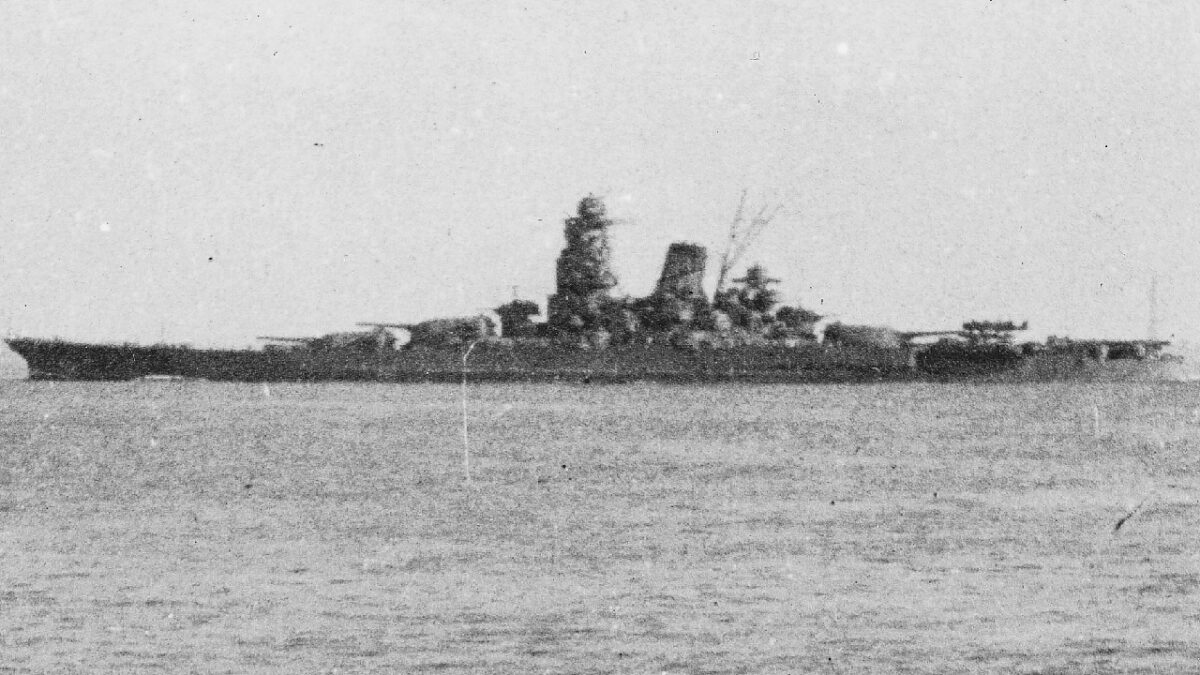
The Japanese battleship Musashi leaving Brunei, Borneo, in 1944, possibly on 22 October, when she departed to take part in the Battle of Leyte Gulf. Photographed by Japanese sailor Tobei Shiraishi from the destroyer Isokaze.
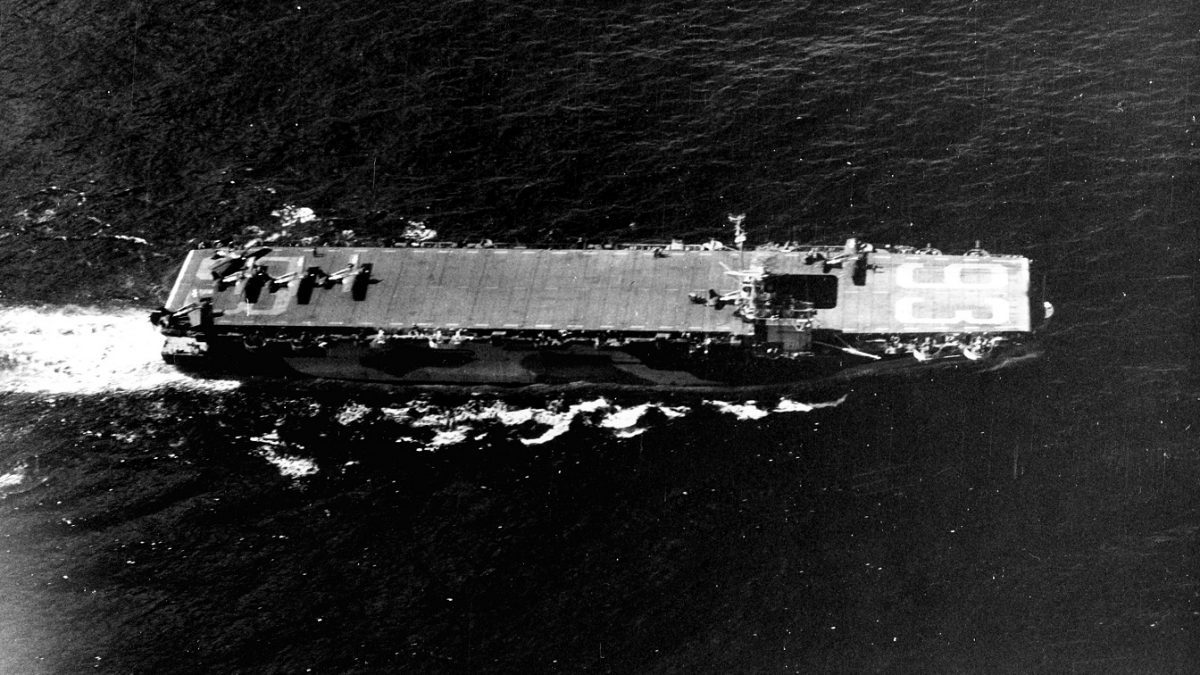
The U.S. Navy escort carrier USS Makin Island (CVE-93) underway in the southwestern Pacific, near Leyte, Philippine Islands, 18 November 1944. The ship is wearing Camouflage Measure 32, Design 16A.
The Battle of Leyte Gulf is also notable in that it involved the United States Navy’s Third and Seventh Fleets, which comprised some eight large aircraft carriers, another eight light carriers as well as 18 escort carriers, and a dozen battleships. The Allied forces won a decisive victory over the Japanese forces, which lost a fleet carrier, three light carriers, and three battleships.
In terms of sheer numbers, it is easy to see why Leyte Gulf has the distinction of being the largest naval battle in history. Yet, some historians will argue it really was a combination of four major subsidiary battles that happened to take place at the same time. Regardless, it was the action that truly delivered that knockout punch to the IJN!
A Senior Editor for 1945, Peter Suciu is a Michigan-based writer who has contributed to more than four dozen magazines, newspapers and websites. He regularly writes about military hardware, firearms history, cybersecurity and international affairs. Peter is also a Contributing Writer for Forbes. You can follow him on Twitter: @PeterSuciu.

